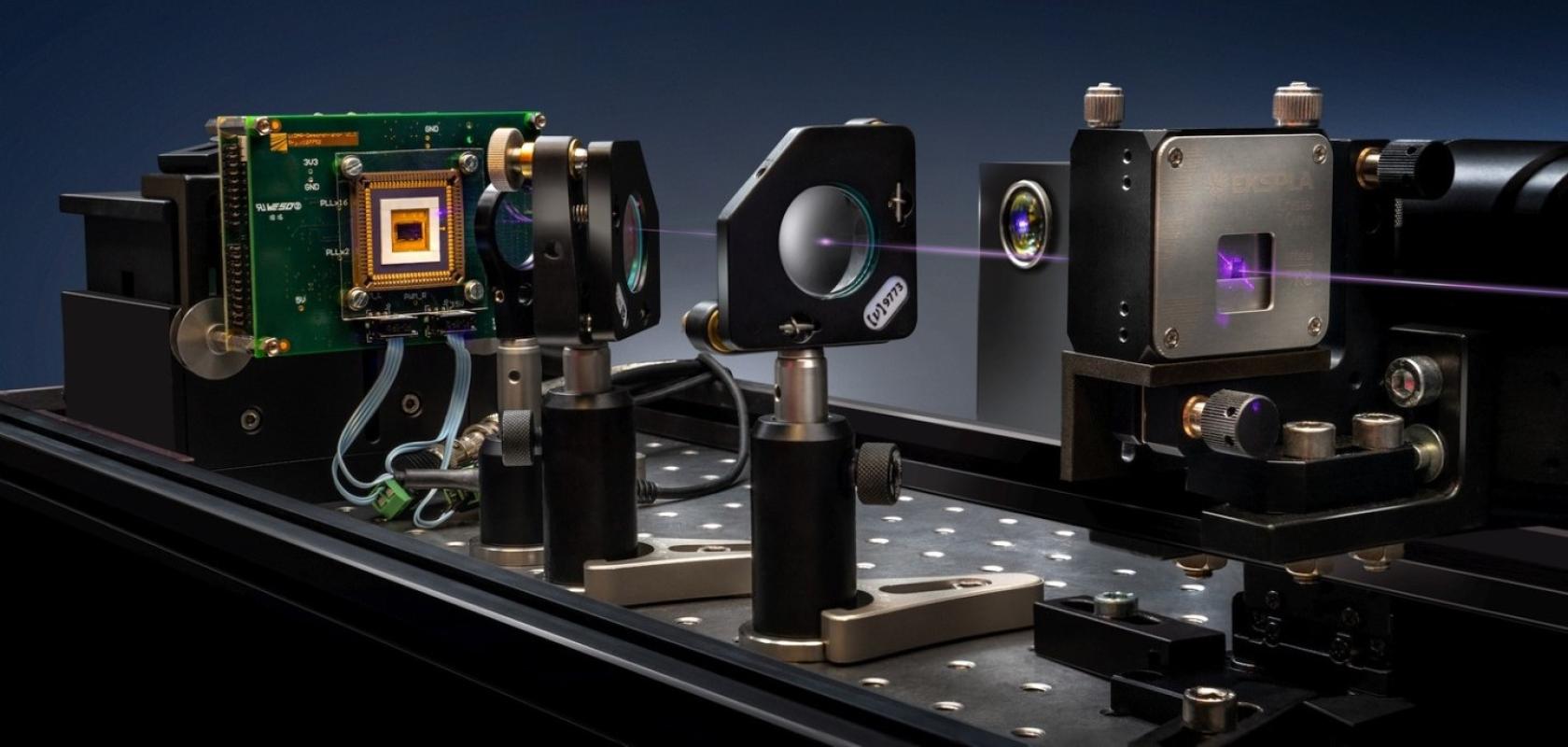Quantum imaging is a continually developing field of quantum photonics in which exotic light-based physical phenomena are used to dismantle the limitations of classical optics to capture images in unprecedented resolution and challenging wavelengths.
Photons that have been quantum entangled – intimately linked to one another regardless of the distance between them – are being used to open up new opportunities for imaging, microscopy, and spectroscopic methods.
Recently, the partners of the QUILT (Quantum Methods for Advanced Imaging Solutions) project, undertaken by six Fraunhofer institutes, the Austrian Academy of Science and the Max-Planck-Institute for the Science of Light, reported a variety of successes in the field of quantum imaging.
For example, the partners demonstrated a new detection principle for terahertz radiation, which shows promise for improving methods for investigating a wide range of materials in the future. When the project was launched in 2018, imaging at terahertz frequencies had long been a technical challenge due to the availability of detectors operating in that region of the spectrum. Scientists often had to resort to scanning methods where a scene was scanned using a single detector, with those traces subsequently having to be put together to compose an image.
With the help of quantum engagement, the QUILT partners have been able to transfer the properties of photons that are difficult to detect (e.g. at terahertz frequencies) to photons that are easy to detect, for example those of visible light. One photon has a wavelength that can be captured on camera, while the other interacts with the object under examination at an invisible wavelength. The visible photons can be identified using more widely available advanced silicon-based detectors while indirectly detecting and utilising terahertz range and its and its diverse application potential. For example, terahertz radiation can penetrate a wide range of materials including plastics, textiles and paper, enabling it to be used for materials analysis and non-destructive quality control.
The partners also captured and reconstructed the world’s first 2D image using ‘quantum ghost imaging’, which could help improve diagnosis in the medical field. This is because when cell cultures or tissues are examined under the microscope, they are irradiated using visible light. The disadvantage, however, is that the visible light transfers energy to the sample in every examination. Even though these interactions are small, they can still change or permanently damage sensitive tissues over time. The measurement duration is often therefore limited by phototoxicity – the sensitivity of samples to the destructive influence of light. ‘Quantum ghost imaging’ instead makes it possible to examine tissues gently and with high contrast in the ultraviolet (UV) wavelength.
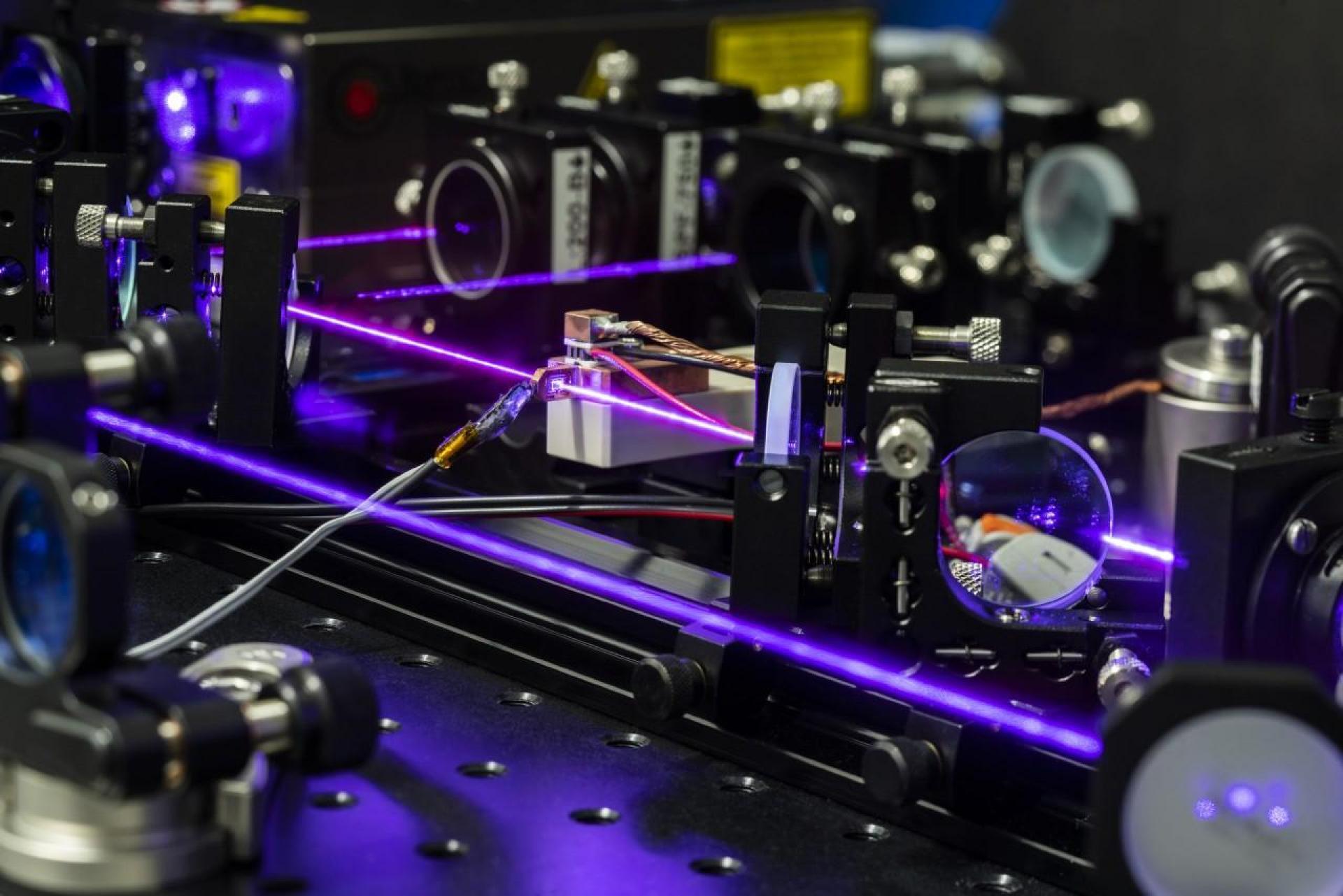
A single-crystal setup used in the QUILT project to examine objects in the ultraviolet and infrared with simultaneous detection in the sensitivity range (visible) of advanced silicon technology (Image: Fraunhofer IOF)
Similar to the work done in the terahertz regime, the QUILT partners, through the targeted illumination of a special crystal at different temperatures and orientations, are able to create entangled photon pairs with different wavelengths. UV photons, which can be used to visualise even the tiniest structures in cells, are generated to probe the sample, while visible photons generated for detection on a high-resolution image sensor. The technique transfers less energy to the cells than conventional methods using only visible photons, enabling light-sensitive samples to be observed in higher resolution over longer periods of time. Quantum ghost imaging could therefore significantly benefit medical diagnostics, according to the QUILT partners.
Overall the QUILT project resulted in the submission and granting of seven patents, high-profile scientific publications and demonstrators for quantum-based imaging, spectroscopy and optical tomography. The researchers intend to use these to continue exploring new unconventional fields of application for quantum-based methods together with industry partners.
Interview: Probing the development and future market of quantum optics
The exploitation of quantum effects in photonics, such as ghost imaging, requires optical set-ups with efficient beam shaping, light guiding, and increased detection sensitivity due to the low number of photons generated and used.
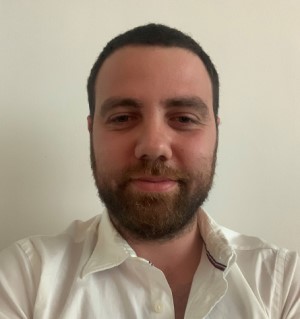
Dr Valerio Flavio Gili, Fraunhofer IOF
To learn more about the unique types of optics required to facilitate quantum imaging, as well as the impact quantum imaging systems could have on the future optics market, Electro Optics approached Dr Valerio Flavio Gili, Quantum Enhanced Imaging group leader at Fraunhofer IOF’s Emerging Technologies Department, which was one of the six Fraunhofer institutes involved in the QUILT project:
EO: Which types of optics are used in quantum imaging systems?
VFG: In quantum imaging systems, it is important to distinguish between three main stages: quantum state preparation, manipulation, and detection.
As for quantum state generation, a crucial role is played by nonlinear crystals, which are currently the most popular means of generating “quantum light”. The majority of experiments involve bulk crystals, even though more recently new solutions are coming from integrated optics, i.e. waveguides or ring resonators, and even more recently nanoresonators or metasurfaces.
As for quantum state manipulation, since phase-matching conditions in nonlinear media are typically polarisation-dependent, polarisation optics are widely used, e.g. waveplates, polarisers, Faraday rotators and insulators; moreover, since diverse wavelengths are involved, coatings also play a fundamental role. Polarisation-optics aside, “standard” optical components such as mirrors, lenses, beamsplitters find wide usage.

Quantum imaging requires optical setups with efficient beam shaping, light guiding, and increased detection sensitivity due to the low number of photons generated and used (Image: Fraunhofer ITWM)
Finally, for the detection side, on the one hand single pixel detectors are still widely used, mostly SPADs, very often in combination with fibre optics as well. On the other hand spatial detection at the single photon level is advancing more and more, where new camera technologies developed in the last decade have helped the development of quantum imaging systems towards practical implementation, ranging from ICCD, EMCCD, sCMOS, and more recently SPAD arrays and TimePix cameras.
EO: How might further developments in optics advance the capabilities of quantum imaging?
VFG: A key ingredient to quantum imaging, necessary to reach a regime of enhanced signal-to-noise ratio, are losses: for that to happen, optics with extremely low losses and high efficiency need to be employed. Optical components with very low losses are already available in the market, however for realistic applications of quantum imaging, further optimisations are to be envisioned.
With the possible development of new-generation optical components with enhanced efficiency, ultra-low losses, and broader spectral operations, a regime where quantum imaging systems can outperform their classical counterparts in a number of practical applications might be envisioned. Such optimisations can potentially affect every area of photonics, where a constant push to improve the performance of every optical component exists.
EO: How might the future successes of quantum imaging impact demand in the optics market?
VFG: One of the key features that makes quantum imaging attractive, aside from enhanced signal-to-noise ratio and low phototoxicity, is the possibility of implementing so-called “two-colour” schemes. These exploit the correlations of photon pairs to investigate samples in wavelength ranges where detectors are less efficient or not available, while performing spatial detection in the visible with the help of the mature CMOS technology. Quantum imaging or sensing schemes using the “two-colour” paradigm have already been developed in the near- and mid-infrared, up to terahertz frequencies. If such direction is maintained in the upcoming years, with the exploration of other “exotic” wavelength ranges, this might have an impact on the future demands for the optics market.
What’s more, when looking at “two-colour” quantum imaging schemes, the biggest challenge is also represented by the availability of high-quality optical components over a large spectral range, especially for the “exotic” ranges where quantum imaging could bring about new possibilities. Indeed, even though “two-colour” schemes rely on detection in the visible range of the electromagnetic spectrum through CMOS technology, a full control on the quantum state of light would be required as well.
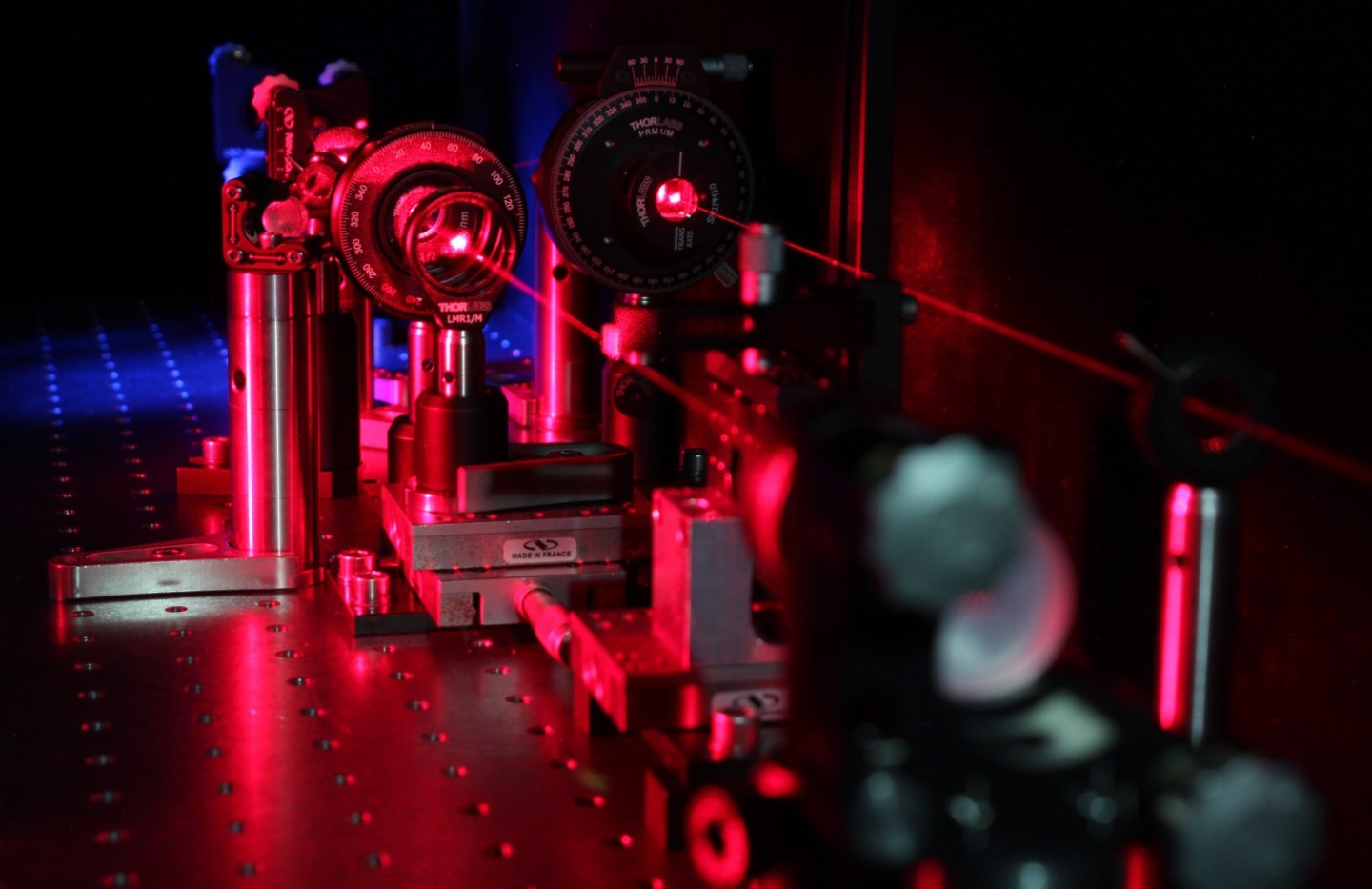
A setup for detecting the photons generated by quantum optics (Image: Fraunhofer ITWM)
Lastly, over the past years, quantum imaging schemes have demonstrated their potential in a wide number of proof-of-principle demonstrations, and have brought about important results in the understanding of fundamental quantum science. At the present stage, a number of companies and research institutions are working to transform such proof-of-principle setups into a defined product that can compete in the market with classical counterparts. Although it is still hard to predict when and how exactly in the future quantum imaging systems will hit the market, once they do, the opening of a new market branch would surely create a considerable demand in terms of specific and optimised optical components.
Endoscopes the width of a human hair
A collaboration between physicists at the University of Glasgow, University of Exeter, Fraunhofer Centre for Applied Photonics Glasgow, Leibniz Institute of Photonic Technology Germany and the Institute of Scientific Instruments of the CAS Czech Republic, has been working over the past few years to develop ultra-compact endoscopes that could revolutionise imaging applications.
“Traditional endoscopes use a bundle of optical fibres, one fibre for every pixel in the image, resulting in a device as thick as a finger. As an alternative, we are developing a new type of endoscope based on a single multimodal optical fibre the width of a human hair,” explained Professor Miles Padgett, a Photonics100 honoree, the Royal Society Research Professor at the University of Glasgow, and Principal Investigator for QuantIC, the UK Hub for Quantum Enhanced Imaging.
Described in Science, the endoscope is able to create video images from the single fibre, and could have applications ranging from inspecting industrial machinery to performing environmental monitoring and making medical imaging less uncomfortable for patients.
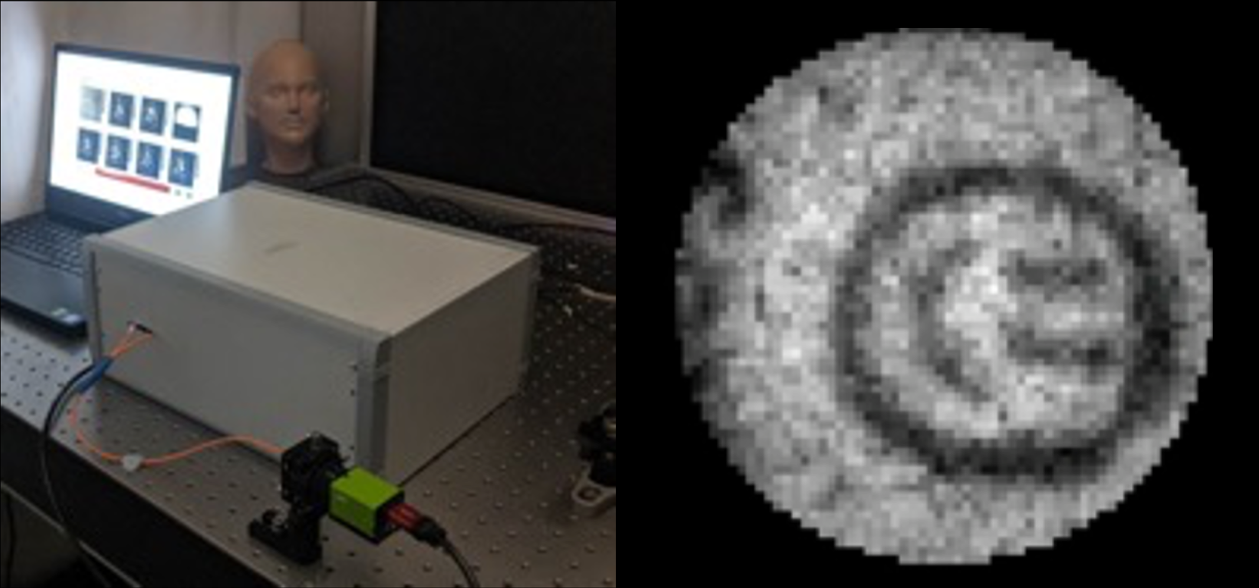
Advanced beam shaping techniques create a raster scanning laser spot emerging from a single multimode optical fibre in this new type of endoscope. Photons backscattered from the target are detected through a second fibre to give near video-rate minimally invasive imaging (Image: University of Glasgow)
Normally, when light shines through a single optical fibre, crosstalk between modes scrambles the light to make the image unrecognisable. To resolve this, the team used advanced beam shaping techniques to pattern the input laser light to the fibre to create a single spot at the output. That spot of light then scans over the scene and the system measures the intensity of the backscattered light into another fibre – giving the brightness of each pixel in the image. By using a pulsed laser, they also measure the time of flight of the light and hence the range of every pixel in the image. These 3D images can be recorded at distances from a few tens of millimetres to several metres away from the fibre end with millimetric distance resolution and frame rates high enough to perceive motion at close to video quality.
“Our ambition is to create a new generation of single-fibre endoscopes that can produce 3D images of remote scenes,” said Padgett. “This could be inserted into a syringe needle which is then inserted into the body. The challenges we are facing currently are at the moment, we can only bend the endoscope by 10 degrees or so – we are trying to improve that so that the endoscope can be bent further. Also, at the moment, it can only see in one colour-it sees in black and white. We want to be able to see in full colour too.”
The research was supported by funding from Engineering and Physical Sciences Research Council (EPSRC), European Research Council (ERC), The Royal Academy of Engineering, UK National Quantum Technology Programme (NQTP) and The Royal Society.
With regards to the future of quantum imaging technology and its potential markets, Padgett remarked that the future does seem bright, however "we’ll have to see what the future holds with regards to the market expansion in terms of size and volume.”
--
In our latest case study, read how LBP Optics' hard gold-coated mirrors deliver a novel solution for high-power fibre laser applications.

